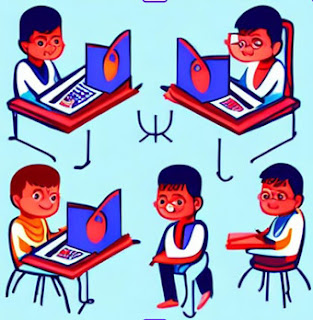Use AI judiciously, never let it make you a slave
Creative
individuals are the driving force behind the development of AI platforms as
well. Therefore, a balanced approach is necessary to ensure that technology
does not enslave us and that our creativity remains under our control
In today’s digital era, the profound
impact of technological advancements on our lives, including education, cannot
be denied. One remarkable tool that holds immense potential for learning is
ChatGPT, an AI-based language model that engages in dynamic and informative
conversations. It acts as a valuable resource, providing students from various
academic disciplines with a wealth of knowledge and assistance in their
academic endeavors. However, it is crucial to verify the authenticity of the
information provided, as the accuracy depends on the data accessible and any
inaccuracies could have an adverse effect on research.One of the possibilities of AI platforms like ChatGPT is their role as research assistants. They empower students to navigate through vast amounts of information, facilitating comprehensive research on diverse topics. Nevertheless, it is essential to crosscheck the facts to ensure the accuracy and reliability of the inputs received. ChatGPT also offers writing support by suggesting improvements in grammar, vocabulary, and sentence structure, as well as providing guidance on essay organization, coherence, and creativity. However, it is important to remember to use it as a support system, leveraging our own creative and analytical skills while writing, as relying solely on AI platforms can hinder the development of these skills.
Complex concepts can be simplified and better understood with the help of platforms like ChatGPT. They break down intricate ideas into digestible components, fostering a deeper understanding of challenging subjects. Yet, it is crucial to utilize such platforms as tools to comprehend how complex ideas are simplified, ultimately aiming to independently master and apply the knowledge.
In language learning, ChatGPT and similar AI tools can serve as valuable companions, facilitating conversational practice, providing grammar explanations, and evaluating written work. They can reinforce the learning process and be utilized as study aids. Similarly, in subjects like mathematics and science, AI tools can assist in problem-solving by providing step-by-step explanations and guiding students through logical reasoning processes. However, it is important to strike a balance and not become overly dependent on these platforms, as neglecting our own skills may hinder proper comprehension and performance in examinations. These platforms should be used to excel academically while ensuring the utilization of our logical, imaginative, and creative abilities, thereby honing our talents and embarking on a path of lifelong learning. One of the key benefits of incorporating AI in the classroom is the potential for personalized learning experiences tailored to individual students.
With the advent of AI, UNESCO emphasizes the importance of a human-centered approach. It seeks to broaden the conversation to include AI’s role in addressing inequalities related to access to knowledge, research, and cultural diversity, aiming to prevent technology from widening technological divides within and between countries. UNESCO’s projects affirm that the deployment of AI technologies in education should enhance human capacities and protect human rights, facilitating effective collaboration between humans and machines in life, learning, and work, all in the pursuit of sustainable development.
While it is undeniable that we conceptually use AI knowingly and unknowingly, it is crucial to remember the significant role of creative education on the academic front. Creative individuals are the driving force behind the development of AI platforms as well. Therefore, a balanced approach is necessary to ensure that technology does not enslave us and that our creativity remains under our control. By harnessing the potential of technology while preserving our own abilities, we can create a harmonious and impactful learning environment that empowers students to thrive.







Comments
Post a Comment